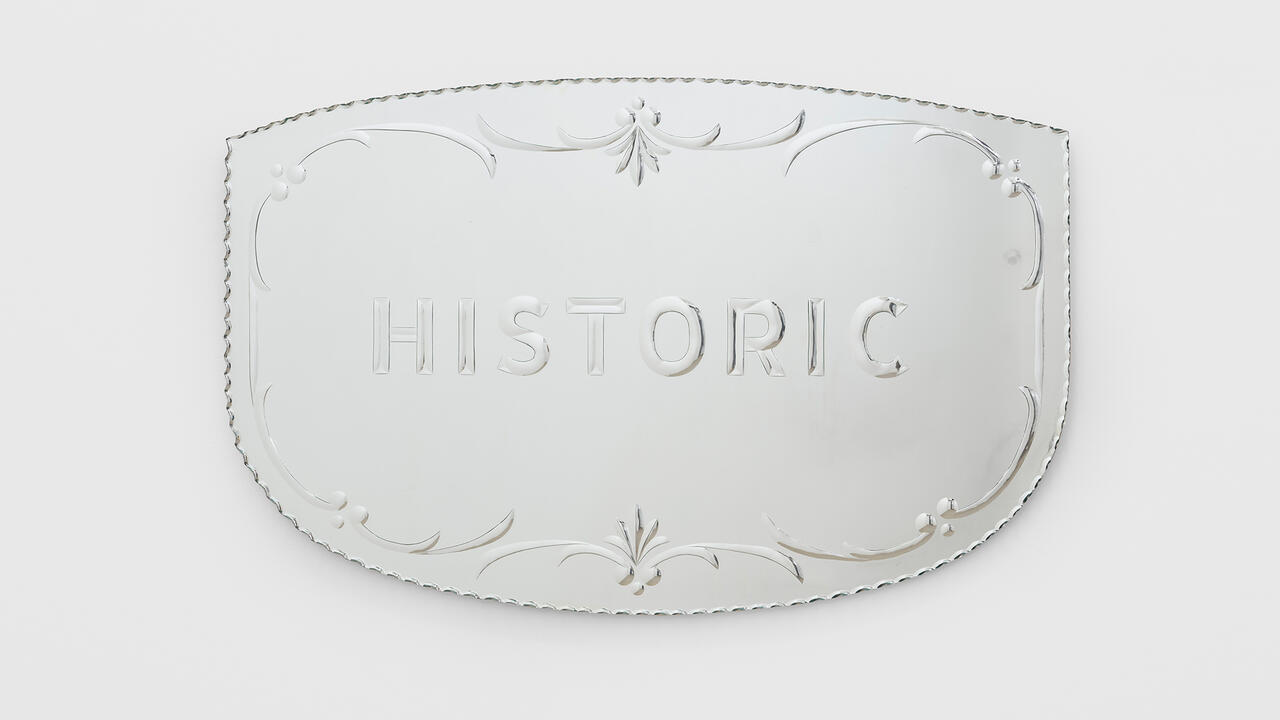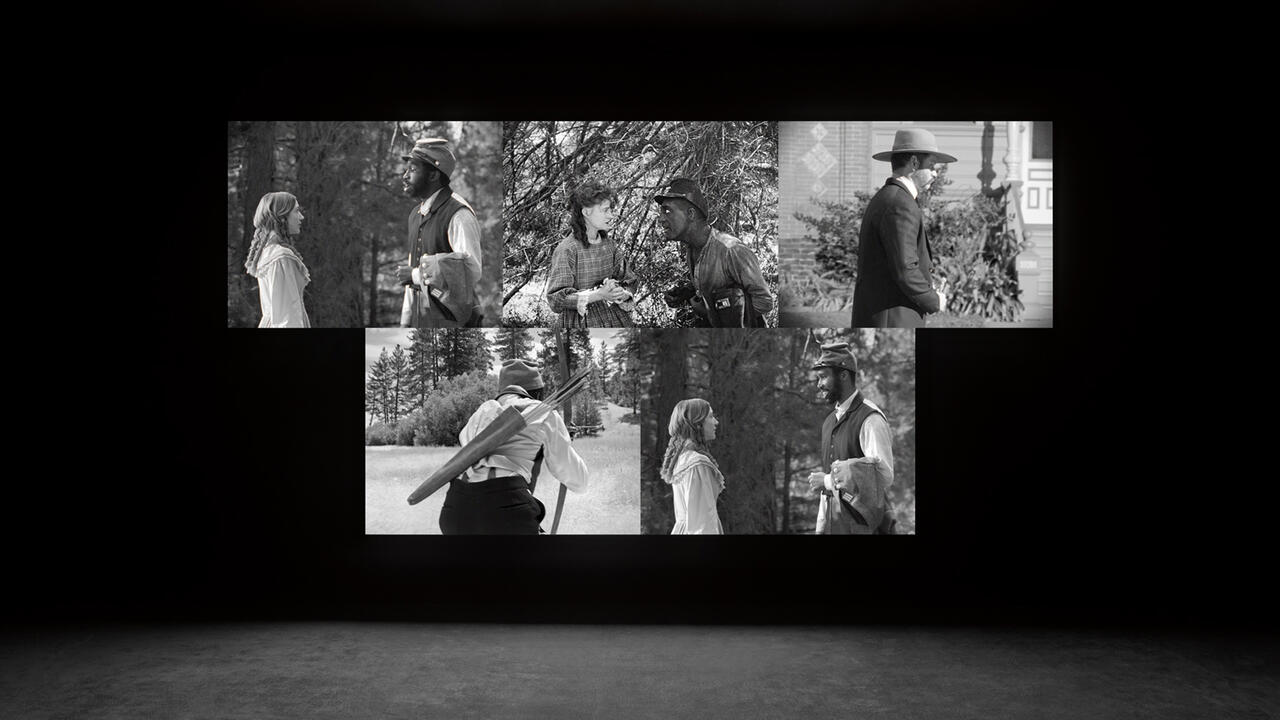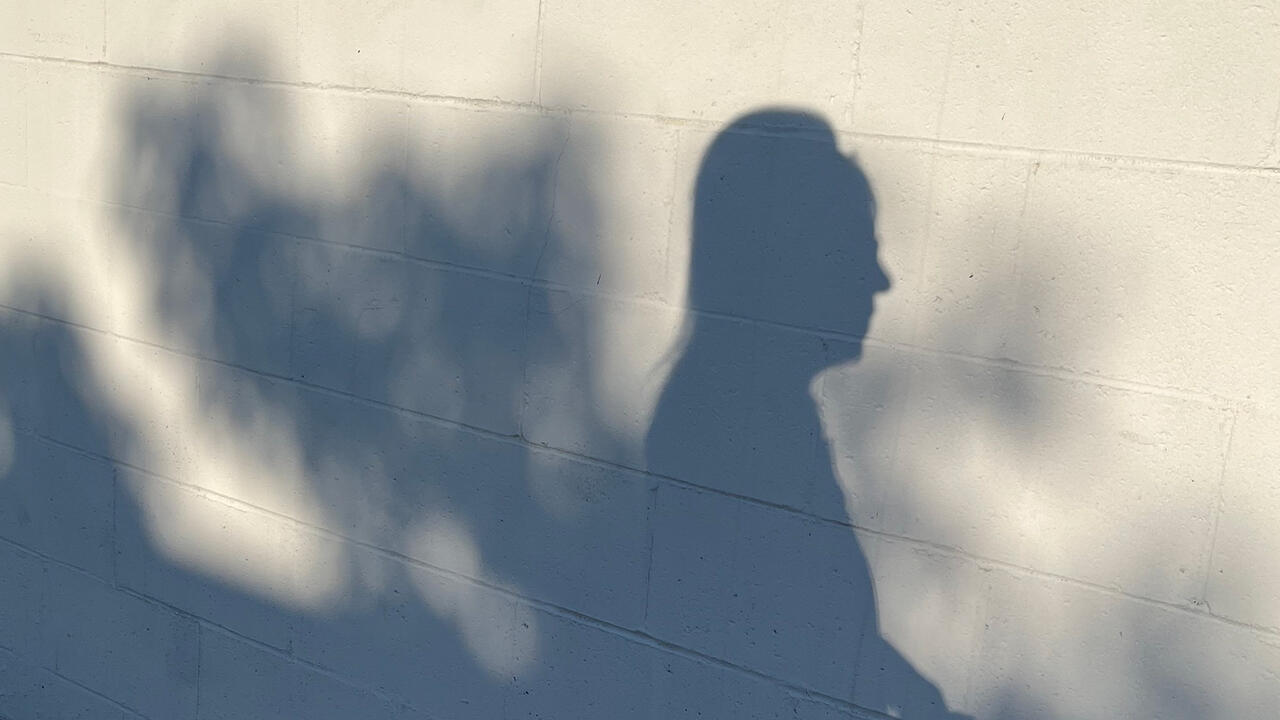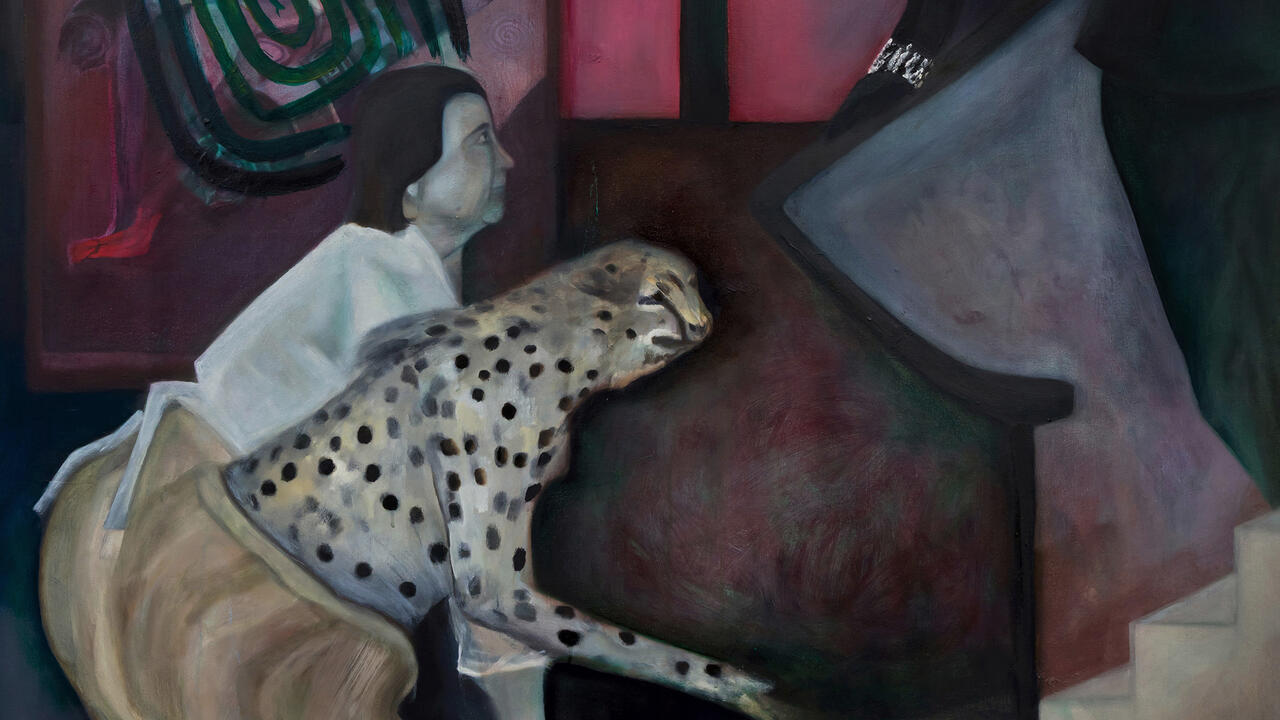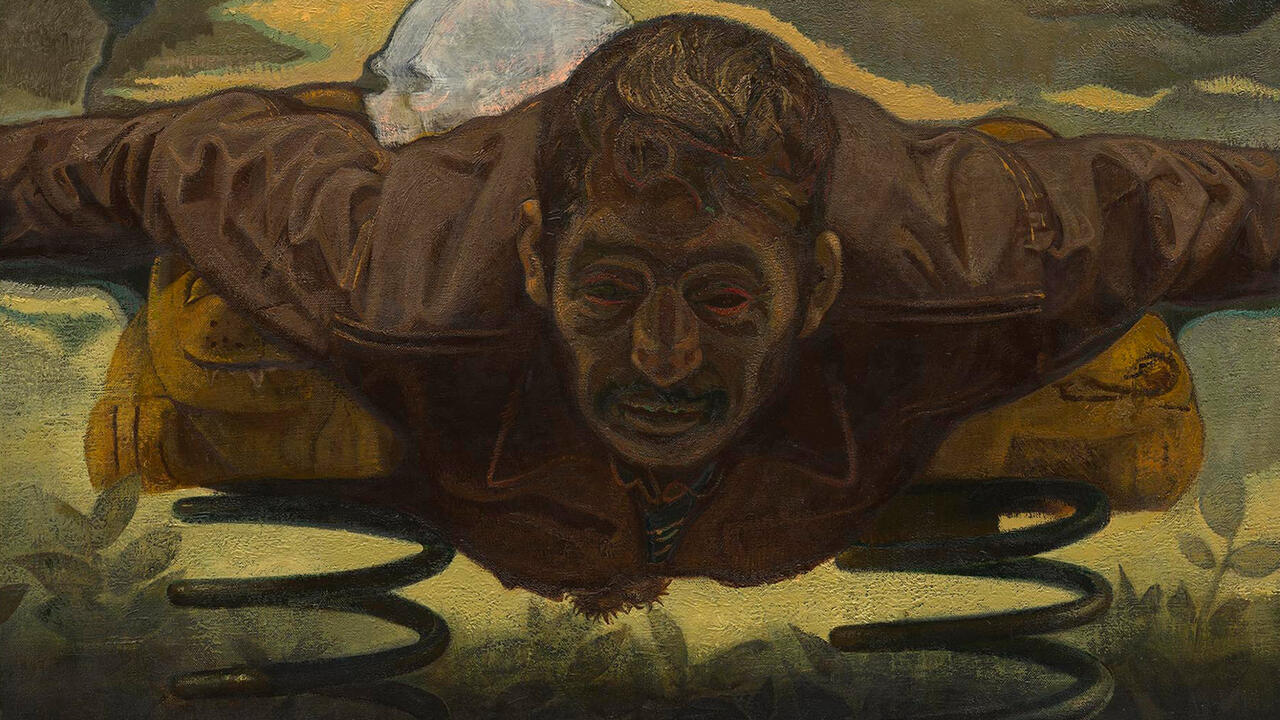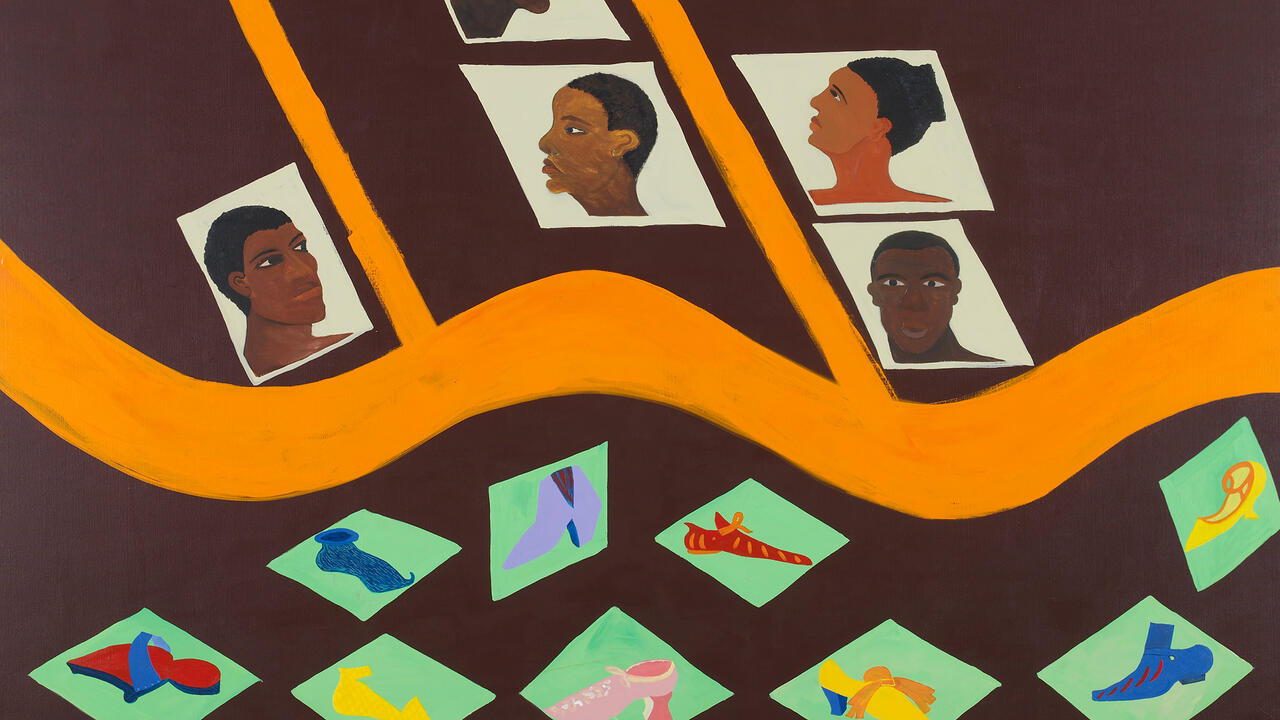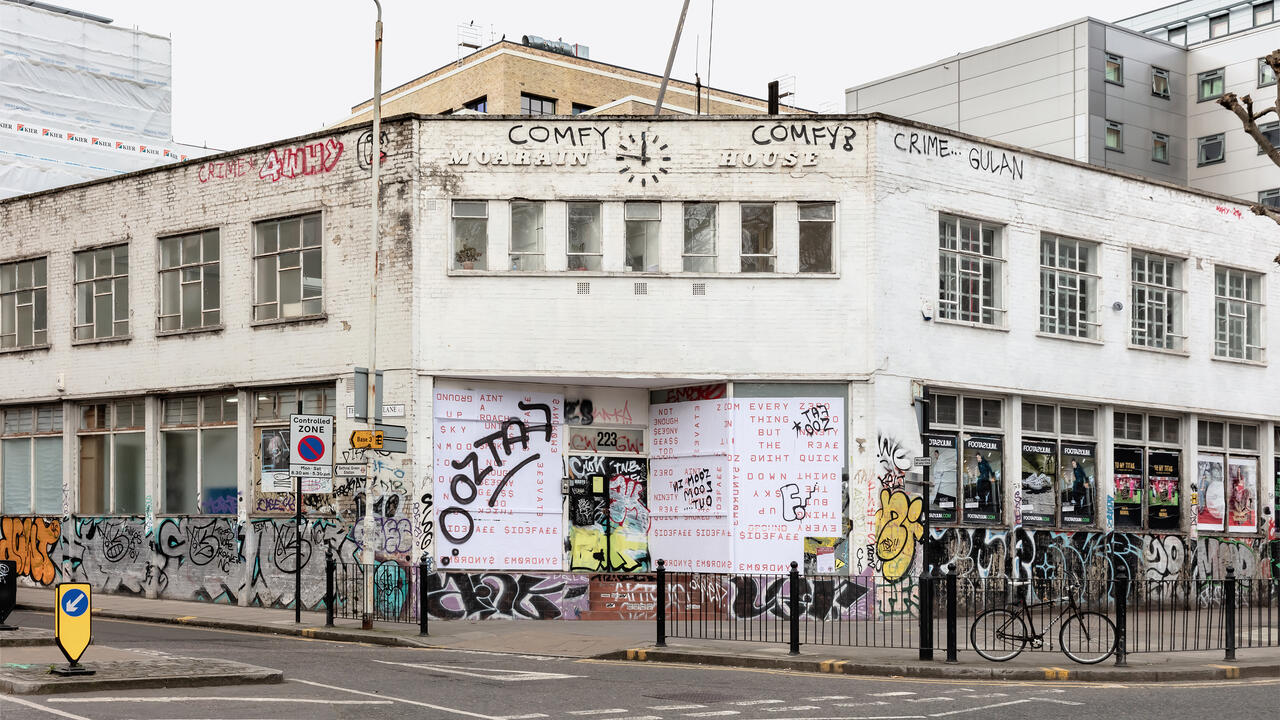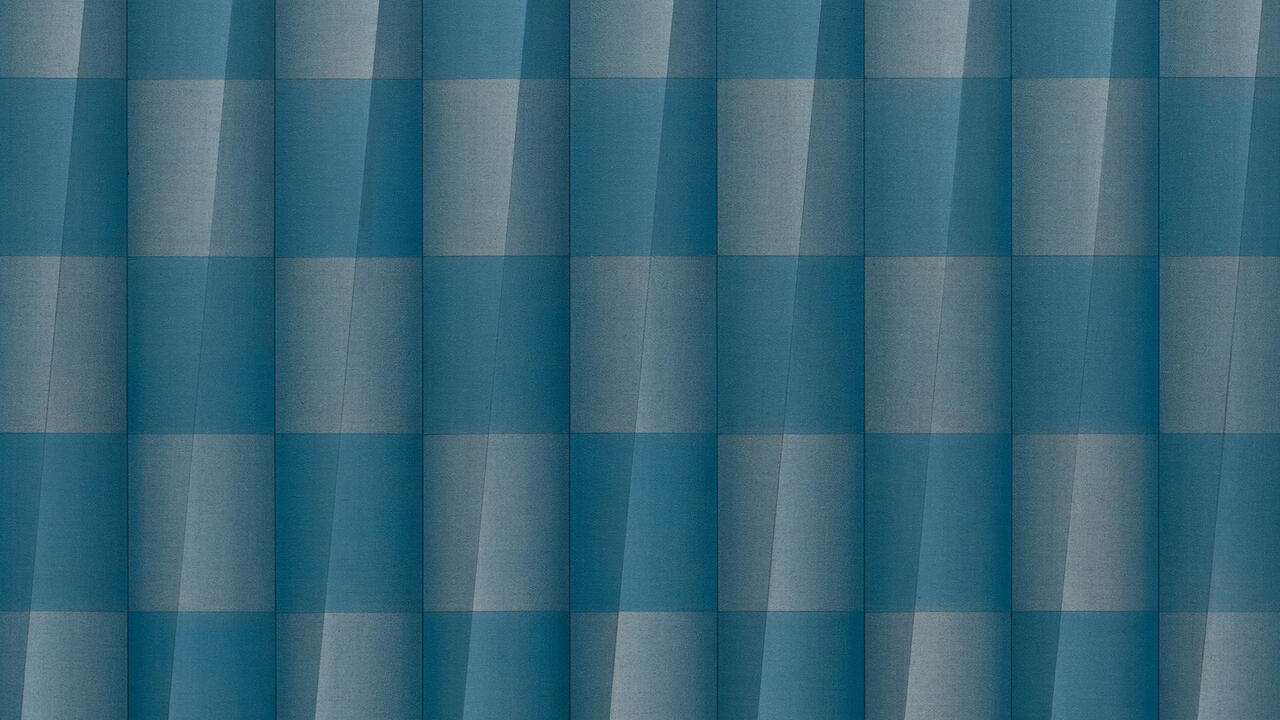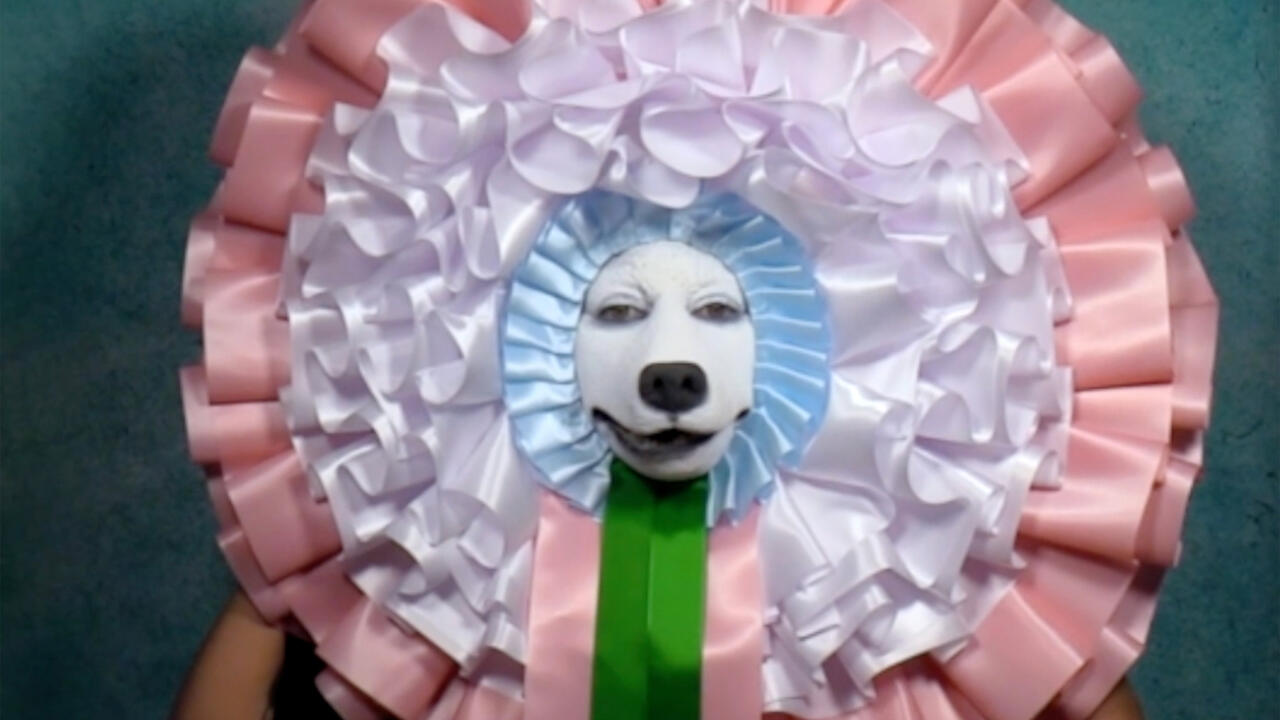Bosco Sodi’s ‘Heavens and the Earth’ Imagines Genesis Through Paint
At Blain|Southern, London, the Mexican artist’s primordial canvases evoke the beginning of the beginning
At Blain|Southern, London, the Mexican artist’s primordial canvases evoke the beginning of the beginning

A Bosco Sodi painting is a slow affair. The Mexican artist takes sawdust, pigment, water and glue, combines them into a starchy paste, then applies this by hand onto canvas. The mixture is dense and inches thick, so as each work dries, sometimes over a period of months, its surface parches, aerates and cracks.
Sodi tends to use a single colour. Sometimes, appropriately, it’s an earth tone; sometimes it’s a more buoyant lavender or green. But for his new exhibition at Blain|Southern in London, ‘Heavens and the Earth’, he turns to dialogues between black and white. From a few metres back, the borders between the two are well defined; up close, they dissociate and bleed. Where fissures have broken out, the edges are scruffy; you can see into the depths of the paint.
In the past, Sodi has given his works suggestive titles like Pangea (2010) or Panthalassa (2011), as if they were models of continents, imagined or dead. The paintings in this new series are all untitled, but the exhibition is not and, coupled with its epigraph (Genesis 1:1), it gestures at primordial changes, the fashioning of Earth.

Too much or not enough? With those celestial hints in mind, and with zero saturation in sight, the paintings beg to be taken for topographic reliefs: a dried-up riverbed, say, or the surface of an alien moon. But that interpretation won’t cohere. Wispy blue streaks go trickling across the canvases, but if they were rivers they’d defy gravitational rules, and the ashy black-white borders make no hydrological or solar sense. Nor could those blurry zones be the defensive edges of a biological cell. From planets down to proteins, several sites of genesis are vaguely suggested by Sodi’s works, but even as they push the grandest of narratives, they don’t give it one scrutable form.
The strongest work, by contrast, has a circular off-white centre spattering out into a black surrounding void. Given the suggestions of cosmic events – a supernova, say, or what passes in our minds for the Big Bang – it dovetails well with the show’s title and scriptural tags. (Sodi knows the imagistic sense that this painting makes: it’s on the cover of the show’s catalogue and is plate number one inside.)
This work gives form to the slowness around which the artist’s practice is built. The Big Bang, after all, was a lengthy beginning: it took vast tracts of time as well as space. (One hundred and eighty million years went by before the stars first shone.) The painting, then, is a picture of nature’s gradual work, itself formed by a gradual natural process. Paint is allowed both to tell and act out.
In the centre of the gallery are seven towers of clay bricks, grouped into clusters of two and five. These are also untitled; each one comprises 42 bricks stacked in 21 layers of two. What they share with the paintings is contingency: each brick is minutely different, having been fired in a kiln at Sodi’s Casa Wabi, a foundation in Mexico whose name is derived from wabi-sabi, the Japanese aesthetic of imperfection and chance.
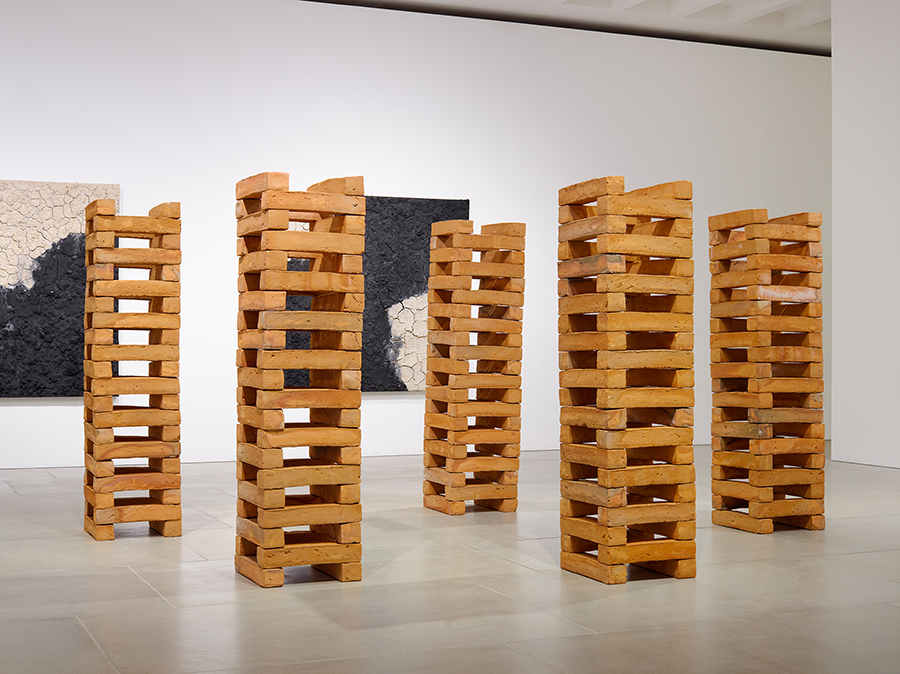
On the other hand, Sodi’s recent use of brick has been political – and thus more precisely deployed. Muro (2017), first staged in New York after Trump’s inauguration, and later in London as part of Art Night 2018, began with a wall of 1600 bricks, each signed by Sodi himself. Visitors became participants by removing one brick each; they were encouraged to take it home.
At Blain|Southern, one of the stacks looks eerie in artificial light, like a ruin unearthed. The other, in the sun, is just bland. They may be testifying to each other, or themselves, or walls outside these walls. Sodi’s work, writes Aaron Rosen in his accompanying essay, tells us that ‘there is a beginning to beginning’. Even so, I wondered, to exactly what end?
Bosco Sodi, ‘Heavens and the Earth’ runs at Blain|Southern, London, until 23 March 2019.
Main image: Bosco Sodi, ‘Heavens and the Earth’, 2019, installation view. Courtesy: the artist and Blain|Southern, London/Berlin; photograph: Peter Mallet









